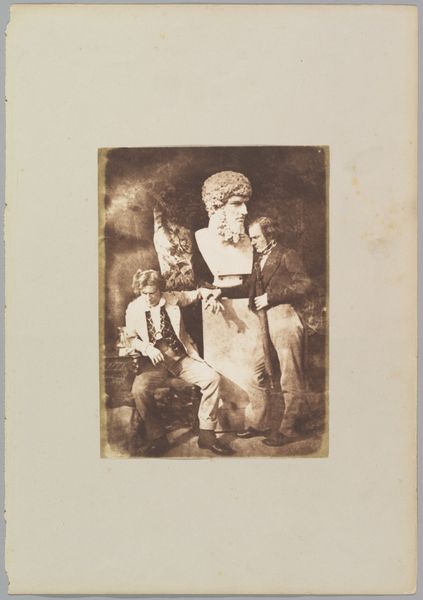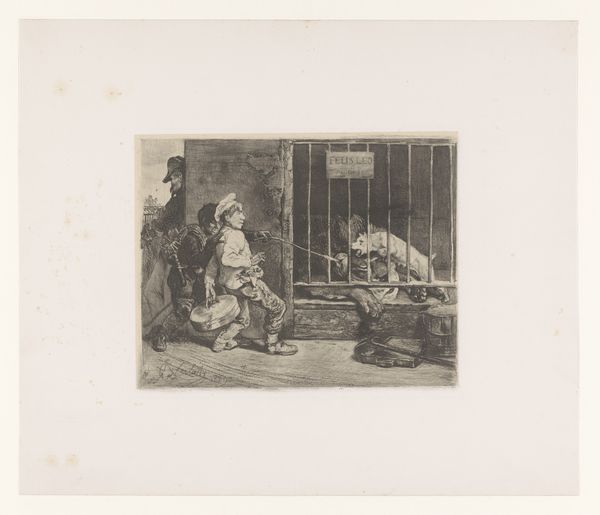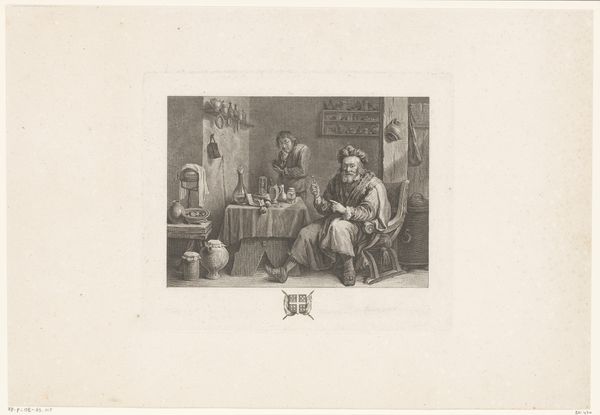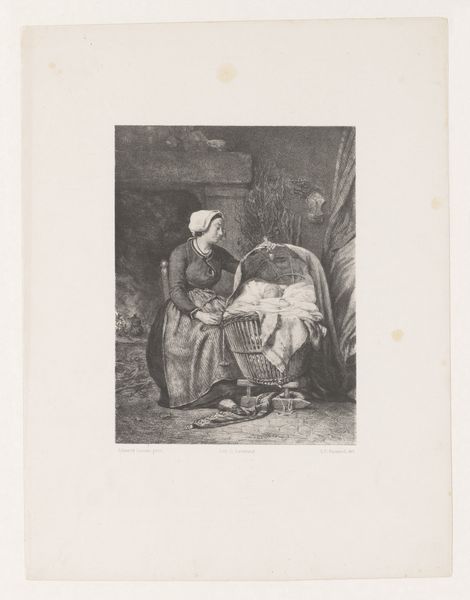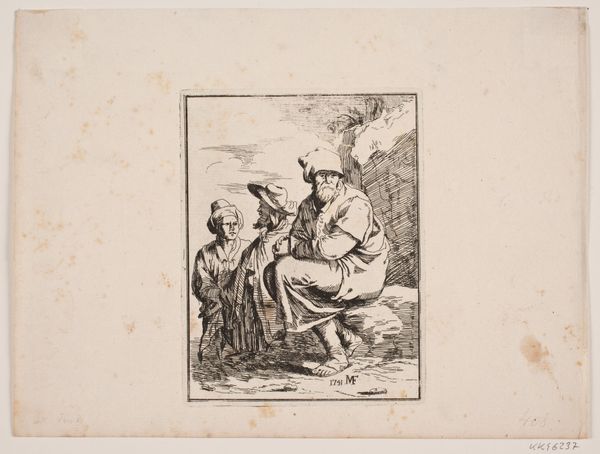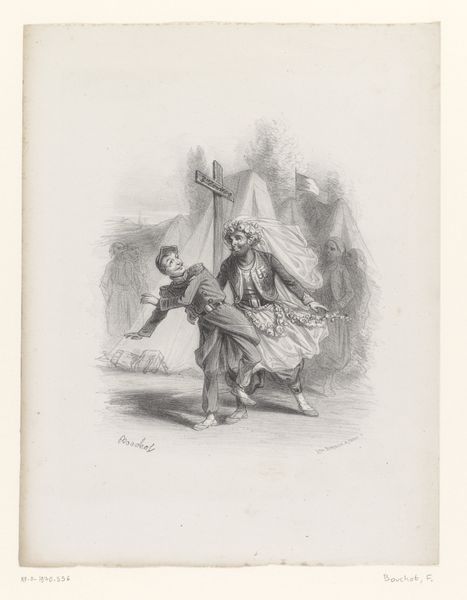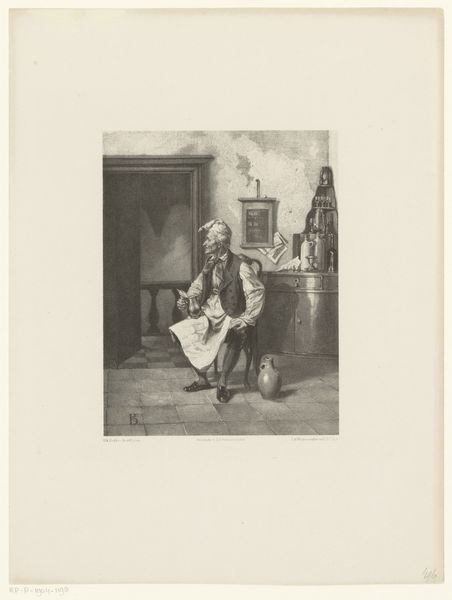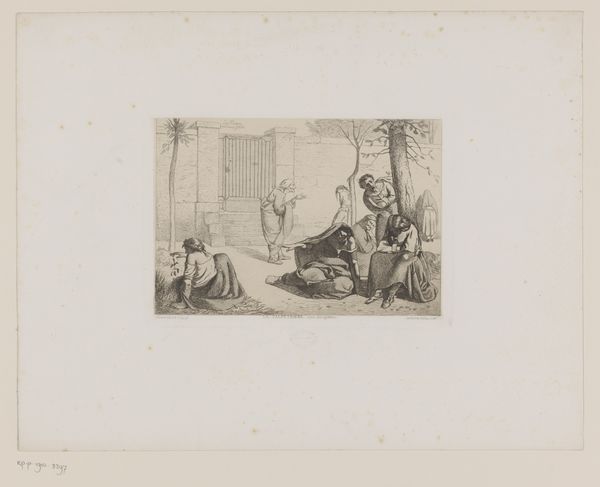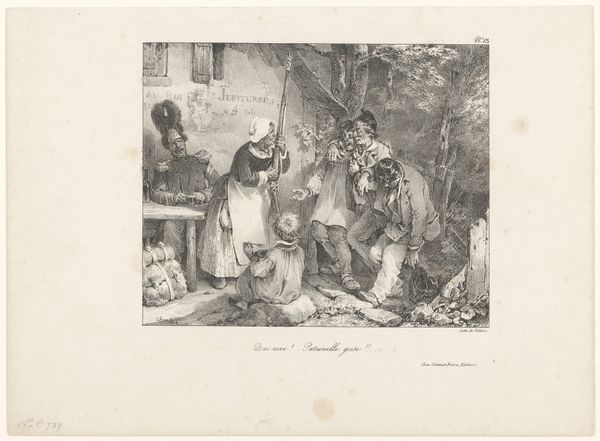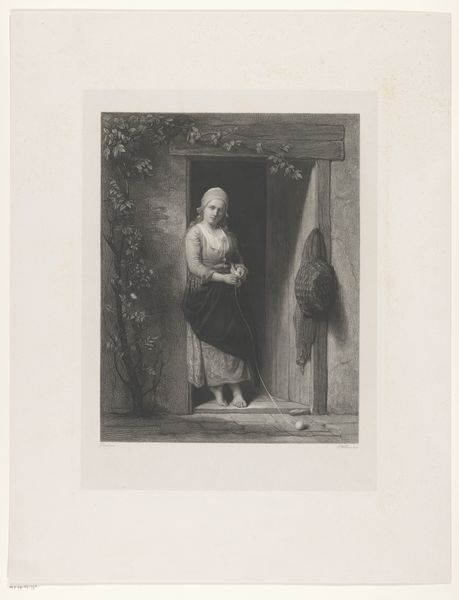
print, engraving
# print
#
landscape
#
genre-painting
#
engraving
#
realism
Dimensions: height 419 mm, width 484 mm
Copyright: Rijks Museum: Open Domain
Curator: Jules François created this engraving, titled "Pelgrims rustend bij de Sint Pieter te Rome" in 1847. What strikes you about it at first glance? Editor: Well, the contrast is compelling. The vulnerability of the sleeping pilgrims huddled at the base of what appears to be Saint Peter's Basilica creates an immediate emotional impact. It’s quite melancholic. Curator: Absolutely. Consider the labour behind this print; the fine lines, the precise gradations achieved through engraving on metal. Each mark represents countless hours and decisions, all geared toward evoking that emotion in the viewer. Note how such skilled artisanship elevates genre painting within the artistic hierarchy. Editor: It goes beyond mere craftsmanship. The slumped postures and worn clothing of the pilgrims—they’re carrying a lot of weight, not just physically but symbolically. Their attire signals their origin and devotion, yet the basilica looms as a distant, almost indifferent, backdrop. Curator: That distance speaks volumes. Pilgrimage was arduous work. The print invites us to think about how their devotion intertwines with material reality: what clothes do they wear, what tools do they carry, and how does their journey affect them? Editor: The woman gazing out from the group seems particularly important. She isn't asleep like the others, and her gaze is quite penetrating, engaging the viewer directly. Perhaps she embodies resilience or hope, essential elements in the larger narrative of pilgrimage? Curator: Perhaps the print functioned almost like a social document. Engravings, widely disseminated, brought images of the poor and itinerant into middle-class homes. This highlights the relationship between art, labor, and consumption. How might people have responded to the image back then? Editor: By translating devotion into an easily circulated print, its imagery gains lasting cultural weight. Beyond mere depiction, "Pelgrims rustend bij de Sint Pieter te Rome" encapsulates the intersection of faith and earthly existence. Curator: Indeed. Looking at it this way has reinforced my appreciation for both the process of creating such a beautiful piece and its commentary on 19th-century social structures. Editor: And I find that exploring its iconography offers us insight into timeless human aspirations of meaning and belonging. It's a privilege to delve into how symbols retain their relevance across generations.
Comments
No comments
Be the first to comment and join the conversation on the ultimate creative platform.


